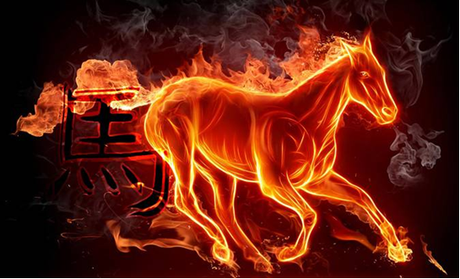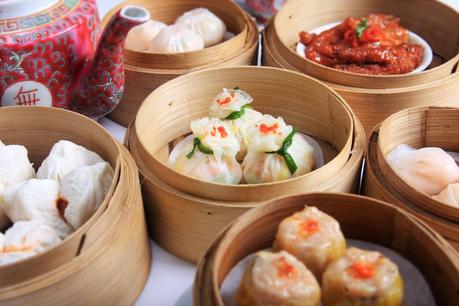 Back in the day, as a child growing up in the land of the long white cloud – New Zealand and later Australia – Thursday night was always takeaway night… and it was usually restricted to fish and chips (no complaints there) with a good dose of Wonder Woman spinning her magic on the tele.
Back in the day, as a child growing up in the land of the long white cloud – New Zealand and later Australia – Thursday night was always takeaway night… and it was usually restricted to fish and chips (no complaints there) with a good dose of Wonder Woman spinning her magic on the tele.
Even pizza was off the take-away menu back then….and Chinese food, well…. it was well and truly an unknown quantity. (Giving my age away really aren’t I?)
As time went on, the first of many Chinese restaurants began sprouting up across the western world in all their red and gold, chopstick wielding glory.
If you had the luxury of dining out in one, it was considered a rather exotic experience. The epitome of kitschy 70/80′s sophistication…these international establishments were true oriental gems.
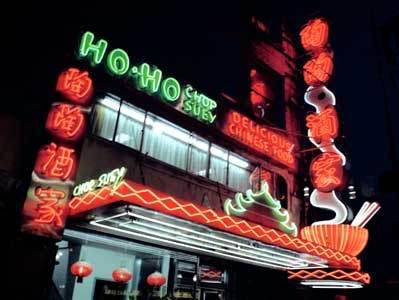
Their brightly lit facades with neon lights flashing names like Ming’s Kitchen, Golden Dragon or Jade Palace cemented their cosmopolitan status – while inside, large, open plan restaurants heavily decorated with red and gold wallpaper, glitzy gold lion and dragon statues and chinese lanterns swinging with pride.

Large round tables, were draped in the obligatory red or white table cloths, some with the ‘Lazy Susan’ turntables… and let’s not forget those overcrowded fish tanks.
These days, many Chinese restaurants really haven’t changed all that much in appearance and feel. The names still ring true and the decor, well let’s just say it’s still got that ‘Porpoise Spit’ feel. (Muriel’s Wedding fans will know what I’m talking about here – if not, just picture that slightly garish ambience that of course we all know and loved.)
In Hong Kong, it’s no secret that residents today like their Chinese local eatery to be bold and bright. The brighter the better. Fluorescent lighting if possible!
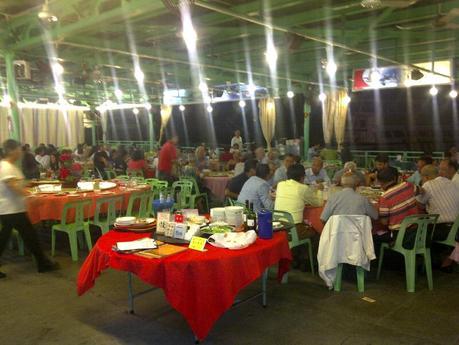
One of Hong Kong’s famous Chinese restaurants on Lamma Island
These clientele are not here for a candle lit dinner for two, but a chatty, lively meal, where conversing with staff for much of the meal duration is seen as a sure sign of a good Chinese restaurant.
(Mind you, I’m told in Mainland China, it’s quite the opposite, with locals preferring private rooms to eat in (in the name of privacy and exclusivity)!
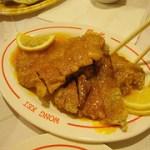
Classic Lemon Chicken
Globally, while some of the traditional interior styles still reign supreme, thankfully the food is no longer limited to the tried and true Sweet & Sour Pork (often drenched in that bright pinky/orange sauce), the classic Honey Lemon Chicken and of course, the ubiquitous Fried Rice.
Chinese cuisine outside of the East has come a long way. Yum Cha (which means “drinking tea”) usually accompanied with a plethora of Dim Sum, is a popular weekend pastime for many an Aussie.
Fried Dim Sim – a popular fusion of the East and West has resulted in the famous heavier, thicker version of the lightly steamed Chinese-style Dim Sum.
It’s probably fair to say, before I came to Hong Kong to live, I wasn’t a huge fan of Chinese food….I didn’t dislike it, but I was typically your standard ‘fried rice and lemon chicken’ ordering girl, who didn’t have the die-hard dedication of someone who today, has been exposed to some of the tastiest ‘chicken feet’ in the land!
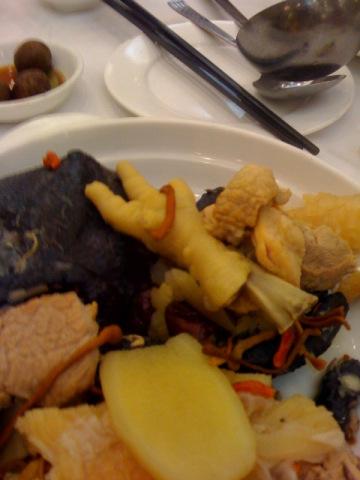
(Just kidding… pork buns and turnip cake are much more my style.)
Dim Sum literally means “Touch Your Heart” and three and a half years into my Asian experience, I reckon it’s done just that!
Served in small bamboo baskets with copious amounts of tea, according to Chinese custom these bite-sized dumplings are traditionally not supposed to be eaten at dinner time, but I say, give me Dim Sum all day, any day!
The most popular kind in Hong Kong is ‘Shao Mai‘ – steamed dumplings made of pork and shrimp, wrapped in a thin layer of wheat flour.
During my most recent Dim Sum dining sensation, in the name of this post, I invited myself out the back for a peek into an authentic chinese kitchen.
First things first, there’s steam… not just a bit of smoke but a giant cloud of steam that catches in your throat, if you’re clearly not used to it!
What goes on in a Chinese kitchen is very much like watching a sacred ritual take place.
Chinese kitchens are broken down into stations, based on the equipment they’re using – versus the western style kitchen stations which relate to the product they’re cooking.
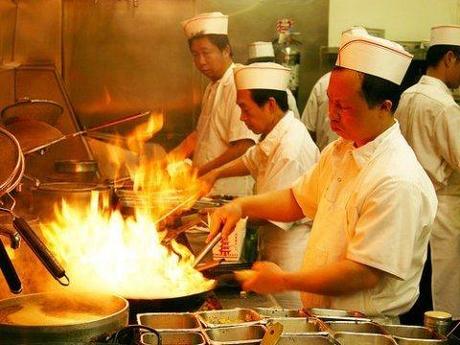
And at the heart of every Chinese culinary hotspot, the Wok!
The distinctive bowl-shaped pan is used for everything from stir-frying to deep frying and making sauces. The only thing you don’t use the wok for is to prepare rice.
Trivial Fact: Historical influences have played a role in the style and shape of the wok; at various times throughout Chinese history, such as periods of famine, the ability to conserve food and eat well but cheaply was crucial. The shape of the wok ensures the cooking oil is distributed evenly, which means, essentially, less oil needs to be used. The food falls back into the pan and not over the edge during stir-frying, which is kind of handy!
(Side Note: A little birdy tells me woks also catch fire very easily!)
So, the Wok Station in a Chinese kitchen usually consists of four woks and if you’re on wok number 1, my friend, you are officially the king pin!
Then there’s the BBQ station, Steamer station and Chopper station…….and never the twain shall meet.
Repeat: If you’re a chef cooking Peking Duck at the BBQ station, then you will never cross over and help out on, say the Steamer…. you will never go to the wok and fry up a few pieces of beef for a stir fry. No. Can. Do!
Each station requires extremely different techniques and is considered to be a work of art, where cuisine is crafted with absolute precision. ‘Chopping’ can be such a delicate process with certain dishes requiring a two centimetre bean curd is sliced into 30 pieces!
In very traditional style, food carving is also quite the art!
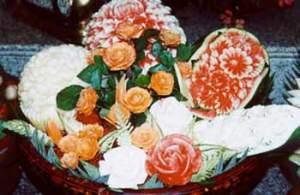
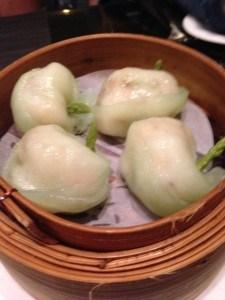
Chinese food must always be piping hot…and I mean so bloody hot, as a westerner you will surely burn your mouth on it.
There are eight regional styles of chinese cooking from Huaiyang cuisine, which created the famous ‘Salted Pork in Jelly’ to the popular Sichuan cuisine which uses lots of hot pepper & chillies and is known for its seven tastes and eight flavours. “Seven tastes” refers to the seven basic flavors – sour, pungent, hot, sweet, bitter, aromatic, and salty. Tea Smoked Duck is a famous dish and Hot Pot is a signature of Sichuan Cuisine – where everybody chooses their own favorite ingredients to cook in 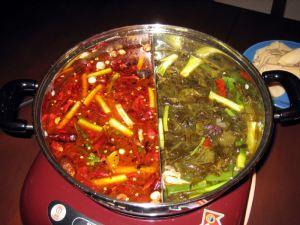
Guandong/Cantonese cuisine favours Dim Sum and plenty of BBQ options including the whole roast suckling pig, while Shandong (eaten in the north) includes lots of braised dishes like abalone with shallots and garlic.
All use very different ingredients and require quite different cooking skills. For more click on the different styles of cuisine across China click here.
Chinese chefs are in overdrive across the country, with the most important and by far the biggest holiday of the year in full swing. Chinese New Year!
Food is a central part of Chinese culture, uniting families, colleagues and friends, particularly in the Kong with most people living in relatively small apartments…meeting venues are invariably restaurants.
And come Chinese New Year, it’s all about the ‘lucky’ foods.
For example, serving a whole chicken during Spring Festival symbolizes ‘family togetherness,’ noodles represent a long life (superstition says it’s bad luck to cut them)! Both clams and Spring Rolls symbolize wealth; clams because of their resemblance to coins, and Spring Rolls because their shape is similar to gold bars.
On the other hand, a food can have extra special significance during Chinese New Year because of the way the Chinese word for it sounds.
The Cantonese word for lettuce sounds like ‘rising fortune,’ so it’s common to serve a lettuce-wrap filled with other lucky food (it also explains why the dancing lions traditionally catch a lettuce in their mouths)!
Tangerines and oranges are passed out freely during Chinese New Year and small orange trees guard every shop and home entry, because the words for tangerine and orange sound like ‘luck and wealth.’
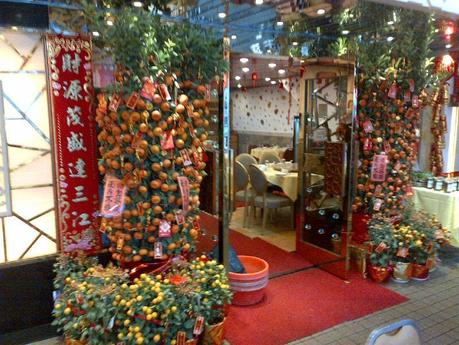
Our fishy friends also play a large role in festive celebrations. The word for fish, “Yu” sounds like the words both for ‘wish and abundance.’ As a result, on New Year’s Eve it is customary to serve a whole fish at the end of the evening meal. For extra luck, the fish is served whole, with head and tail attached, for a good beginning and ending for the coming year.
To find out more about the timeless traditions and folklore attached to the Lunar New Year – check out my post here. “In With the Old, Out with the New.”
So from me to you….as the Year of the Snake draws to a close and the Year of the Horse gallops into fruition…. symbolising the year of energy, flamboyance and fun-loving frivolities, there’s no better time to eat, drink and be merry!
Kung Hei Fat Choi.
PS. Don’t forget the sweet stuff! According to legend, sugary snacks sweeten up prospects for the coming year….what’s on the menu? Nian Gao (rice pudding), Jau Goks (crispy dumplings) candied fruits and seeds.
